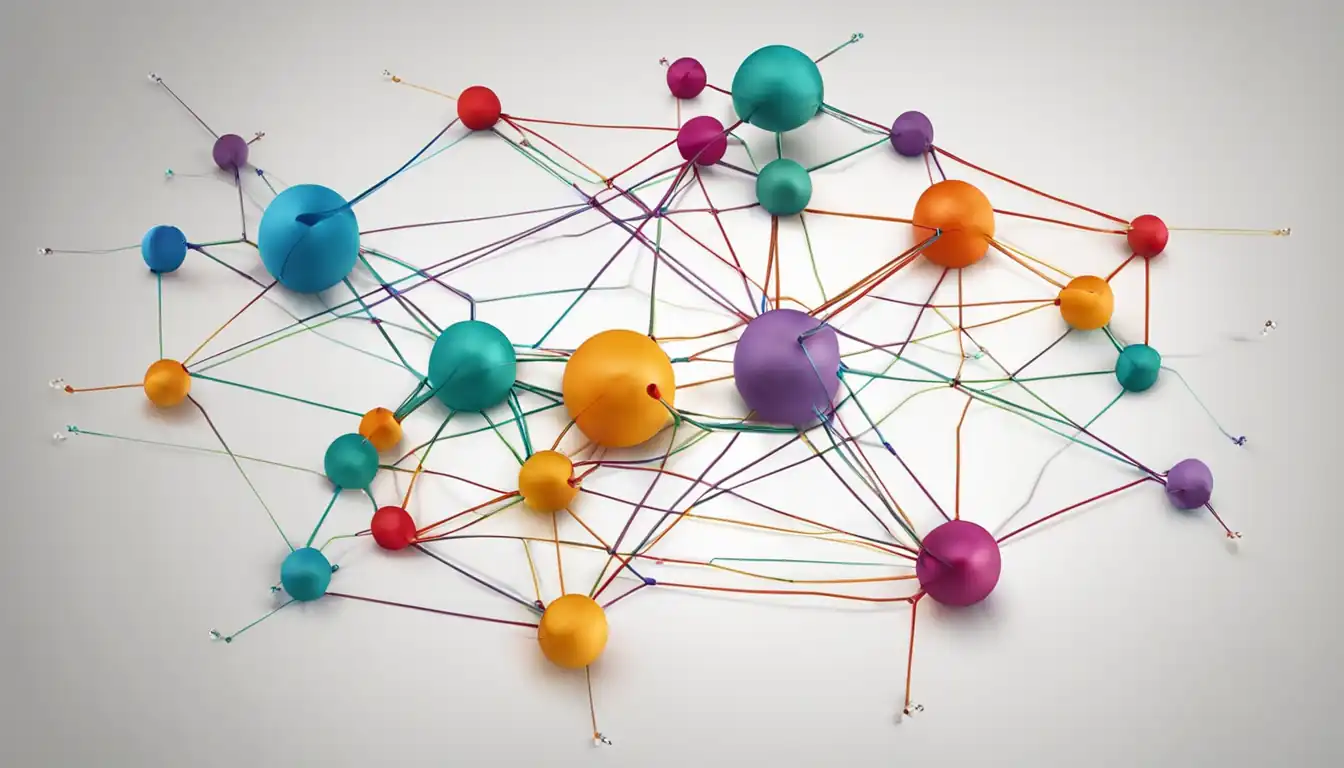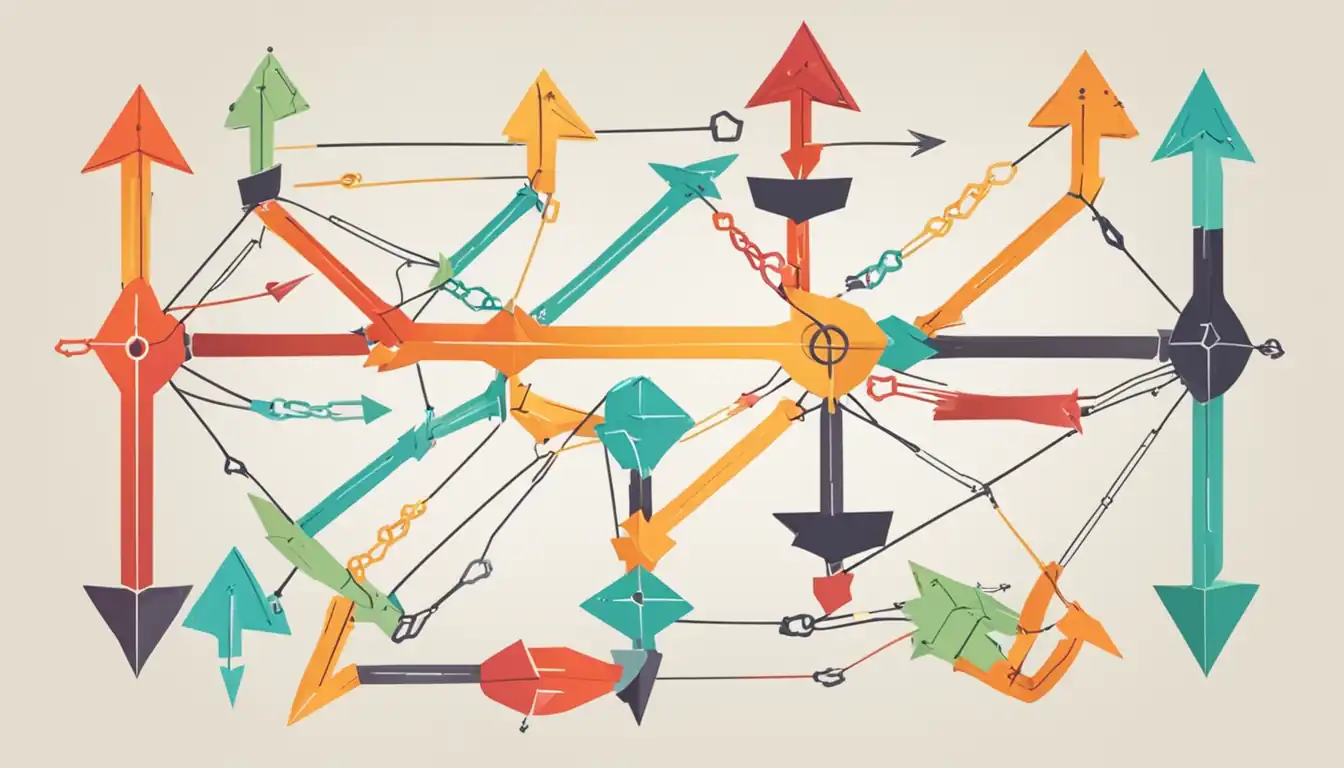Mastering SEO Content Internal Linking for Enhanced Site Structure

When it comes to SEO, internal linking is like the secret sauce that ties your website together. It's not just about throwing in a few links here and there - it's about strategically connecting your content to create a cohesive and user-friendly experience. In this post, we'll dive into the world of mastering SEO content internal linking for enhanced site structure.
Understanding the Basics of Internal Linking

What is Internal Linking
Internal linking is the practice of linking one page on a website to another page on the same website. These links help users navigate a website and also play a crucial role in SEO.
Why Internal Links Matter for SEO
Internal links are important for SEO for several reasons:
Improved Site Structure: Internal links help search engines understand the hierarchy and structure of your website, making it easier for them to crawl and index your pages.
Distributing Page Authority: By linking from high-authority pages to other pages on your site, you can pass on some of that authority and improve the ranking potential of those linked pages.
Increased Time On Site: Internal links encourage users to explore more pages on your site, increasing their time on site and reducing bounce rates.
Enhanced User Experience: By providing relevant internal links, you can guide users to related content that they may find valuable, improving their overall experience on your site.
Strategic Placement of Internal Links
Internal linking is a crucial aspect of SEO content strategy, as it not only helps search engines navigate your site but also enhances user experience. Here are some key strategies for mastering internal linking on your website:
Crafting Contextual Links Within Your Content
1. Relevant Anchor Text: When inserting internal links within your content, ensure that the anchor text is relevant to the linked page. This helps both users and search engines understand the context of the link.
2. Natural Integration: Avoid forcing internal links into your content; instead, integrate them naturally within the flow of your writing. This will make the links more user-friendly and improve overall engagement.
3. Link Depth: Consider the depth of your internal links within the site structure. Linking to deeper pages can help distribute link equity throughout your website and improve crawlability.
Navigational and Hierarchical Link Structures
1. Clear Site Navigation: Implement a clear navigational structure on your website to guide users and search engine crawlers through different sections of your site. This can include menus, breadcrumbs, and sitemaps.
2. Hierarchical Organization: Organize your internal links in a hierarchical manner, with important pages receiving more prominent placement within the site architecture. This can help establish authority and relevance for key pages.
3. Siloing Content: Consider grouping related content into silos or clusters, with internal links connecting pages within each silo. This can help search engines understand topical relevance and improve overall site structure.
Incorporating these strategies into your SEO content internal linking approach can lead to enhanced site structure, improved crawlability, and ultimately higher rankings in search engine results pages (SERPs).
Best Practices for Anchor Texts in Internal Links

Internal linking is a crucial aspect of SEO content strategy, and anchor texts play a significant role in enhancing site structure. Here are some best practices to consider when using anchor texts in internal links:
Varieties of Anchor Texts and Their Impact
When creating internal links, it's essential to use a variety of anchor texts. This diversity helps search engines understand the context of the linked pages and improves the overall user experience. Some common types of anchor texts include:
- Exact match: These anchors use the exact keyword or phrase that is targeted for optimization.
- Partial match: These anchors contain variations or partial keywords related to the target page.
- Branded: Anchors that include the brand name or website URL.
- Generic: Non-descriptive anchors like "click here" or "read more."
By incorporating different types of anchor texts, you can create a natural link profile that looks organic to search engines.
Balancing Keyword-Rich Anchors with Generic Phrases
While using keyword-rich anchors can help improve SEO rankings for specific terms, it's essential to balance them with generic phrases. Over-optimizing anchor texts with keywords may raise red flags to search engines and result in penalties.
A good practice is to mix keyword-rich anchors with generic phrases to create a diverse and natural link profile. This approach not only enhances site structure but also improves user experience by providing relevant and helpful navigation cues.
Remember, the goal of internal linking is to guide users through your website seamlessly while signaling search engines about the importance and relevance of your content. By following these best practices for anchor texts in internal links, you can master SEO content internal linking for enhanced site structure.
Tools and Techniques to Optimize Internal Linking

Internal linking is a crucial aspect of SEO content strategy that often goes overlooked. By strategically linking pages within your website, you can enhance site structure, improve user experience, and boost search engine rankings. Here are some tools and techniques to help you master internal linking for enhanced site structure.
Auditing Your Existing Links
Before you can optimize your internal linking strategy, it's essential to audit your existing links. This involves analyzing the current internal links on your website to identify any broken links, orphaned pages, or opportunities for improvement. There are several tools available to help you with this process, such as:
- Google Search Console: This free tool from Google provides valuable insights into your website's performance, including internal linking data.
- Screaming Frog: A powerful SEO tool that can crawl your website and identify issues with internal links.
- Ahrefs: Another popular SEO tool that offers comprehensive link analysis features.
By conducting a thorough audit of your existing links, you can pinpoint areas for improvement and develop a more effective internal linking strategy.
Software Solutions to Simplify Link Management
Managing internal links across a large website can be a daunting task. Fortunately, there are software solutions available that can simplify the process and streamline link management. Some popular options include:
- Yoast SEO: A WordPress plugin that offers features for optimizing internal linking within the platform.
- Link Whisper: A tool specifically designed to help users build better internal link structures on their websites.
- SEMrush: An all-in-one SEO tool that includes features for analyzing and optimizing internal links.
These software solutions can help automate the internal linking process, saving you time and ensuring that your website's structure is optimized for maximum SEO benefits.
In conclusion, mastering SEO content internal linking is essential for enhancing site structure and improving search engine rankings. By utilizing the right tools and techniques, you can create a well-organized website that not only attracts visitors but also performs well in search results.
Advanced Strategies for Internal Linking

Using Internal Links to Boost Lesser-Seen Pages
Internal linking is a powerful tool that can be used to boost the visibility of lesser-seen pages on your website. By strategically linking these pages to more prominent ones, you can increase their chances of being indexed by search engines and seen by users. Here are some key strategies for using internal links to enhance the visibility of your lesser-seen pages:
Anchor Text Optimization: When creating internal links, use descriptive anchor text that includes relevant keywords. This not only helps users understand what the linked page is about but also provides valuable context for search engines.
Link Placement: Place internal links within the body of your content where they make sense contextually. Avoid overloading your pages with excessive links, as this can dilute their effectiveness.
Deep Linking: Link to specific sections or pages within your website rather than just the homepage or main navigation menu. This helps distribute link equity throughout your site and improves the overall user experience.
Regularly Audit and Update Links: Periodically review your internal linking structure to ensure all links are working properly and pointing to relevant pages. Update any broken or outdated links to maintain a seamless user experience.
Integrating Silo Structures with Internal Links
Silo structures involve organizing your website's content into distinct categories or themes, with each category serving as a separate "silo" that contains related pages and subtopics. By integrating silo structures with internal links, you can create a more cohesive and organized site structure that enhances both user experience and SEO performance.
Benefits of Silo Structures:
- Improved Indexing: Search engines can easily crawl and index content within each silo, leading to better visibility in search results.
- Enhanced User Experience: Users can navigate through related topics more seamlessly, increasing engagement and reducing bounce rates.
- Targeted Keyword Optimization: Each silo can be optimized for specific keywords, allowing you to target niche topics effectively.
Best Practices for Integrating Silo Structures with Internal Links:
- Create Clear Navigation Paths: Ensure that each silo has clear navigation paths that guide users through related content within the same theme.
- Use Hub Pages: Designate hub pages within each silo that serve as central hubs linking out to related subpages. This helps establish topical authority and strengthens internal linking.
- Optimize Anchor Text: When interlinking between silos, use anchor text that reflects the topic of the linked page while maintaining relevance to the originating page.
- Monitor Performance: Track the performance of internal links within silos using analytics tools to identify opportunities for improvement and optimization.
Incorporating these advanced strategies for internal linking can help you master SEO content internal linking for an enhanced site structure that drives organic traffic and improves user engagement on your website.
Conclusion
By mastering the art of internal linking, you can take your SEO game to the next level. Remember, it's not just about quantity, but quality and strategic placement that truly make a difference. So go ahead, audit those existing links, craft contextual anchors, and watch as your website climbs the ranks in search engine results pages. Happy linking!